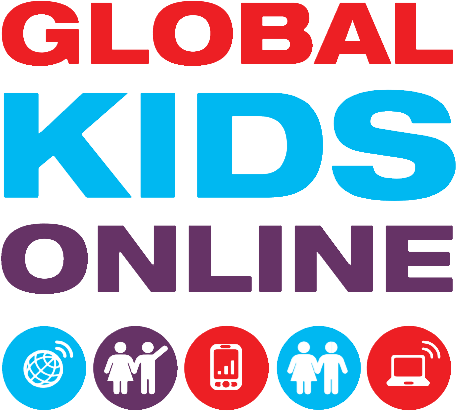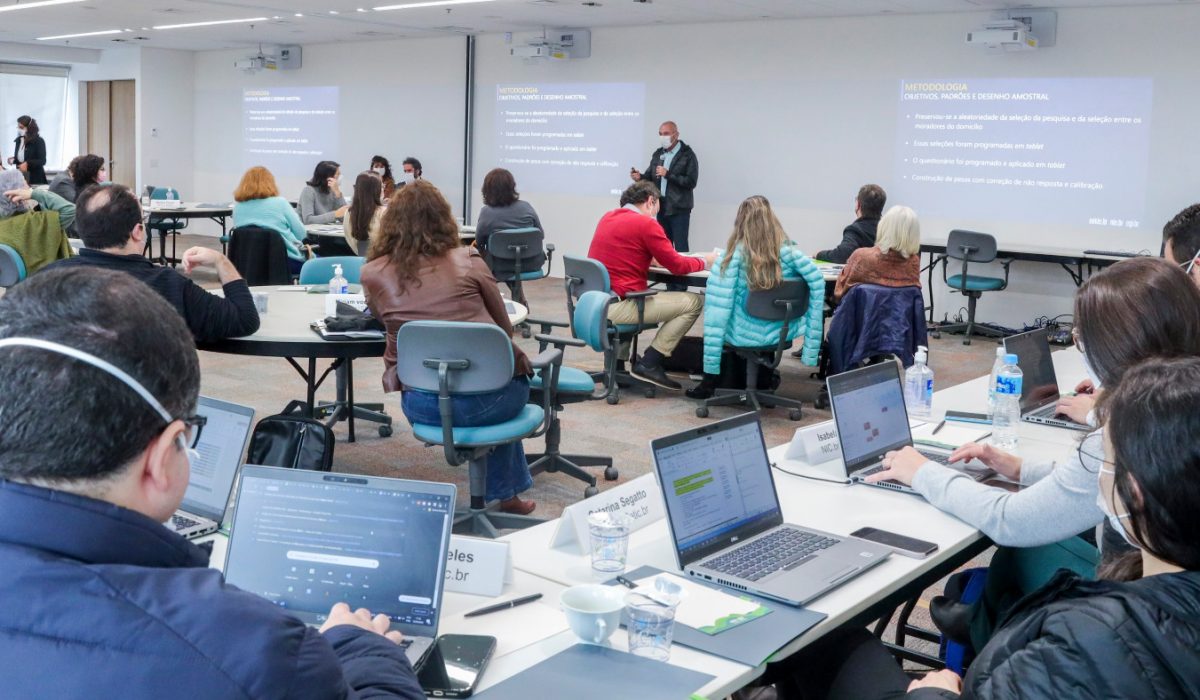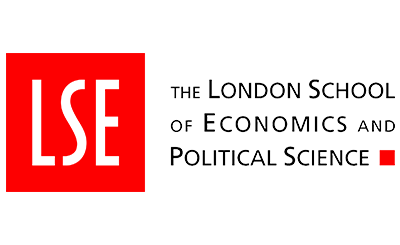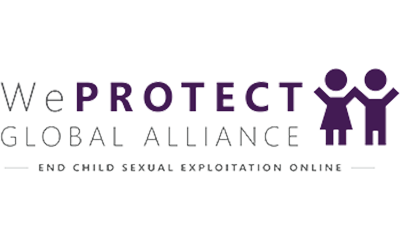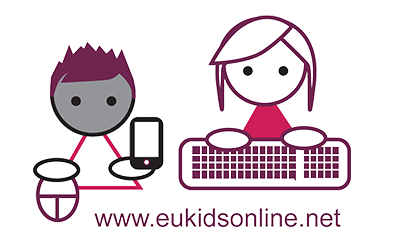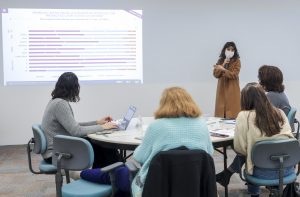
Expert meeting (Image credit: Nic.br – Reunião TIC Kids © Ricardo Matsukawa)
Connectivity and dynamics of use
The ICT Kids Online Brazil 2021 survey highlighted an increase in the proportion of children that are internet users in the country (93% in 2021 compared to 89% in 2019). The increase was steeper in the Northeast (from 79% in 2019 to 92% in 2021) and the rural areas (from 75% in 2019 to 90% in 2021).
Although advances in connectivity can be observed, the evidence shows important differences in internet access conditions. In 2021, 11.9 million children aged 9 to 17 years lived in households with internet access but without access to a computer or laptop and 2.1 million lived in households without computers and without internet.
ICT Kids Online Brazil 2021 survey showed that mobile phones were still the predominant device used to go online in all socioeconomic groups: 53% of the participating children said they had accessed the internet exclusively via mobile phones and the proportion was even higher for the lower socioeconomic groups (78% in classes DE). Computers were used more by the better-off families (82% of classes AB compared to 45% of C and only 16% of DE).
Devices used to access the internet
An important highlight of the 2021 ICT Kids Online Brazil edition was a sharp increase in the use of smart TVs to access the internet. The proportion increased from 43% in 2019 to 58% in 2021. Although there has been faster growth in the use of TV sets to access the internet in the lower socioeconomic groups (from 48% in 2019 to 62% in 2021 in class C and from 24% in 2019 to 42% in 2021 in classes DE), the use is still higher in the better-off families (69% in 2019 and 73% in 2021 in classes AB).
In terms of location of internet access, home use was still predominant (97%). Nonetheless, in 2021 there was growth in access at school in urban areas which reached 41% compared to 31% in 2019.
Online activities of children in Brazil
Multimedia, education, and communication activities were the most common online activities amongst all age groups. The activities that increased the most between 2019 and 2021 were the use of social networks (from 68% in 2019 to 78% in 2021) and online gaming, whether played with others (57% in 2019 and 66% in 2021) or individually (55% in 2019 and 64% in 2021).
According to the ICT Kids Online 2021 survey, 80% of children aged 9 to 17 years had a WhatsApp account compared to 70% in 2018. The second most popular platform was Instagram with 62% of children reporting having a profile in 2021, up from 45% in 2018. The opposite trend was observed for Facebook with children who have a profile decreasing from 66% in 2018 to 51% in 2021. For the first time, the 2021 survey asked about accounts on TikTok, which was reported by over half (58%) of the participating children. The proportion of children who had profiles on Twitter (17%) and Snapchat (12%) was lower.
Children by social networks on which they have a profile

Children by the main social network used

The proportion of internet users aged 9 to 17 years who reported Facebook as the most used social network also dropped from 41% in 2018 to only 11% in 2021. Instagram and TikTok were the main platforms of about a third of all children.
Exposure to advertising online
The proportion of children aged 11 to 17 years who reported being exposed to advertising on social networks was 61%, up from 52% in 2018. Advertising on video websites (67%) and television (65%) was also higher than in traditional print media such as magazines, newspapers, and comic books (21%).
The most common type of advertising image or video content which children saw involved people demonstrating how to use a product (62%), unboxing (61%%), showcasing products that some brand gave them (54%), carrying out challenges or playing with a product or brand (53%), going to stores or events to showcase some product or brands (48%) or even prize draws or contests for products or brands (47%).
The main categories of products seen online were electronic equipment, such as mobile phones, tablets or computers (60%), clothes and shoes (60%), food, drinks or sweets (57%), and video or other types of games (46%).
Internet use for health information and emotional support
A new addition to the 2021 ICT Kids Online Brazil survey was collecting data on the use of the internet for health information and emotional support. Among internet users aged 11 to 17 years, 32% reported seeking online help for dealing with negative experiences or sharing their emotions when they felt sad. The proportions were higher among the older age groups. The use of the internet to seek emotional support was reported by 46% of the children aged 15 to 17 years, 28% of those aged 13 to 14 years and 15% of the youngest group aged 11 to 12 years.
In addition to searching for online support, the research also investigated looking for health-related information online. Looking for information about food was the most common (55%) followed by prevention and treatment of diseases (38%), exercising or ways to get in shape (36%), information about medication (22%) and discussions about sexuality, such as sexual health and sexual education (21%). In addition, 29% of children aged 11 to 17 looked for information about feelings, emotional distress, mental health and well-being.
For the full results from the current survey see here.
For results from the previous waves see here.
About the survey
The ICT Kids Online Brazil 2021 survey interviewed 2, 651 children aged 9 to 17 years, as well as their parents or legal guardians, throughout the country. Interviews were conducted between October 2021 and March 2022 to understand how this population uses the internet and how they deal with risks and opportunities related to internet use. The methodology of the survey is aligned with the conceptual framework developed by the EU Kids Online network, enabling the production of comparative studies on the topic.
About Cetic.br
The Regional Center for Studies on the Development of the Information Society, a department of the Brazilian Network Information Center (NIC.br), is responsible for producing indicators and statistics on the availability and use of the internet in Brazil and publishes regular analyses and information about the development of the internet in the country. Cetic.br is a regional centre for studies under the auspices of UNESCO.
More information can be found at: https://cetic.br/en/sobre/
About NIC.br
The Brazilian Network Information Center (http://www.nic.br/) is a nonprofit civil society organization that implements the decisions and projects developed by the Brazilian internet Steering Committee (CGI.br). Its ongoing activities consist of coordinating the registration of domain names through Registro.br (http://www.registro.br/), studying, responding to and resolving security incidents in Brazil through Cert.br (http://www.cert.br/), studying and researching network and operational technologies through Ceptro.br (http://www.ceptro.br/), producing indicators on information and communication technologies through Cetic.br (http://www.cetic.br/), and hosting the W3C Brazil Office (http://www.w3c.br/).
About CGI.br
The Brazilian internet Steering Committee is responsible for establishing strategic directives related to the use and development of the internet in Brazil, and coordinates and integrates all of the internet service initiatives in the country, promoting technical quality, innovation and dissemination of the services provided. Based on the principles of multilateralism, transparency and democracy, CGI.br represents a multi-stakeholder internet governance model that includes the effective participation of all sectors of society in its decisions. One of its products is the 10 Principles for Internet Governance and Use (http://www.cgi.br/principios).
More information can be found at: http://www.cgi.br/.
